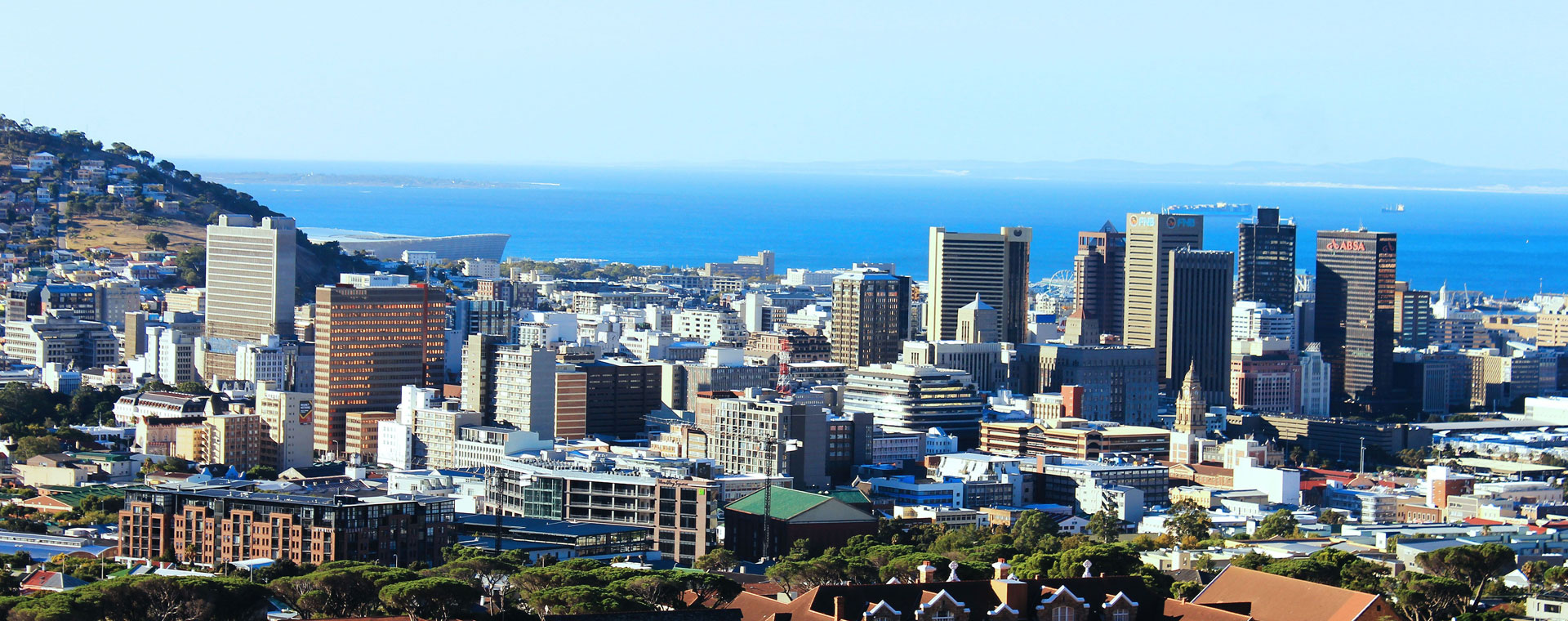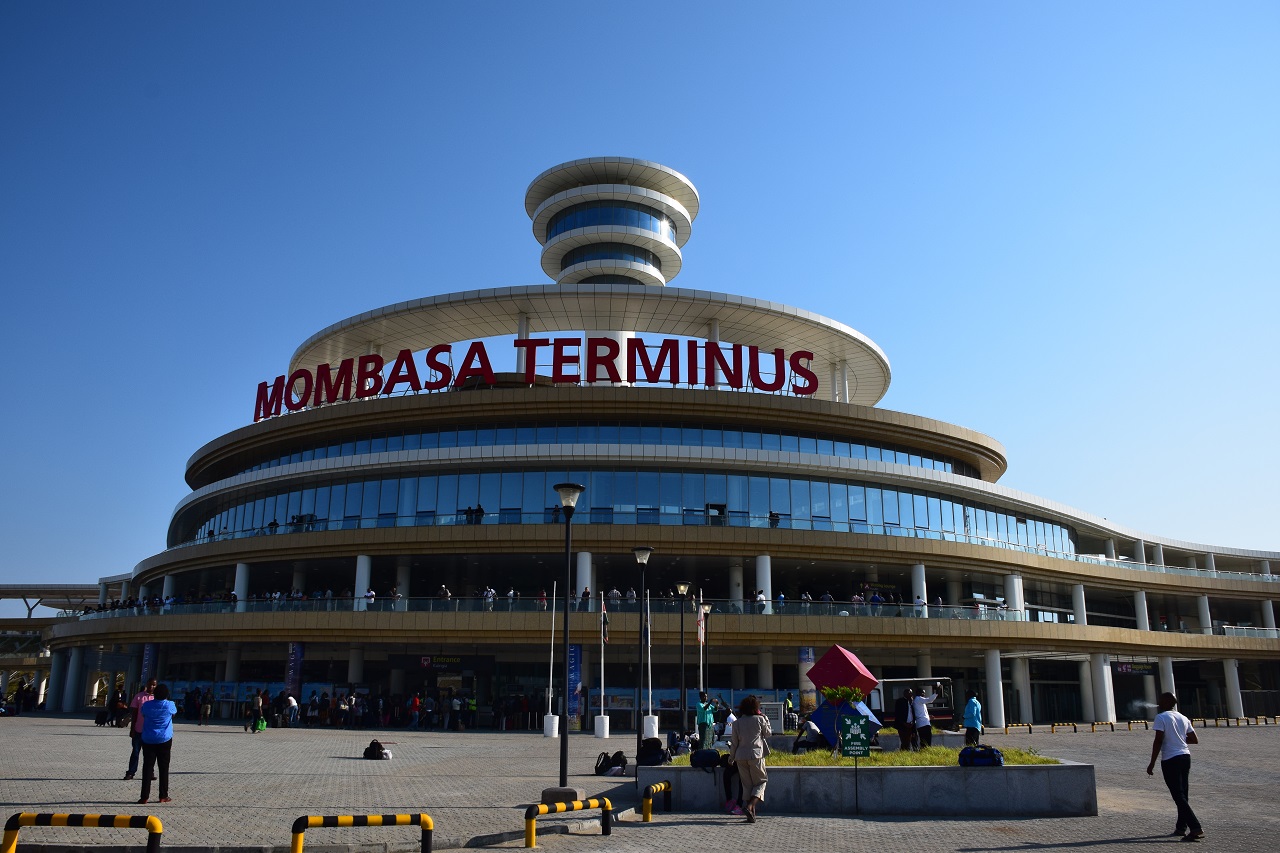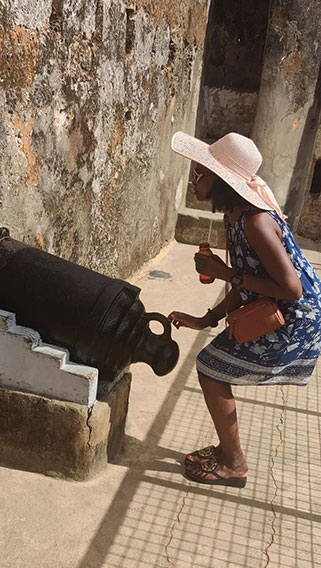
Mombasa is found in Africa and is the second largest city in Kenya, lying on the Indian Ocean. It has a major port and an international airport. The city is the centre of the coastal tourism industry. The original Arabic name is Manbasa; in Swahili it is called Kisiwa Cha Mvita (or Mvita for short), which means "Island of War", due to the many changes in its ownership. The town is also the headquarters of Mombasa District which, like most other districts in Kenya Africa, is named after its chief town. The city has a population of 727,842, as per the 1999-census,[citation needed] and is located on Mombasa Island, which is separated from the mainland by two creeks: Tudor Creek and Kilindini Harbour. The island is connected to the mainland to the north by the Nyali Bridge, to the south by the Likoni Ferry and to the west by the Makupa Causeway, alongside which runs the Uganda Railway.
The port serves both Kenya and countries of the interior, linking them to the Ocean. The town is served by Moi International Airport. The town is mainly occupied by the Muslim Mijikenda/Swahili people. Over the centuries, there have been many immigrants and traders who settled in Mombasa, particularly from Iran, the Middle East, Somalia and the Indian sub-continent, who came mainly as traders and skilled craftsmen. Even after four or five generations, their descendants continue to contribute highly to the economy of present day Mombasa and Kenya as a whole. Traditional dress for the Swahili women is a brightly coloured, printed cotton sheet called a kanga, which may have inspirational slogans printed on it. Muslim women wear a covering known as a bui bui, that is traditionally black, along with a head covering called a hijaab, and sometimes wear a veil called a nikab. Men wear a type of sarong, which is coloured in bright bands, called a kikoi. Mombasa is the second largest city in Kenya, and perhaps one of the best beach holiday destination in Africa lying on the Indian Ocean.



It has a major port and an international airport. The city is the centre of the coastal tourism industry. The original Arabic name is Mambasa; in Swahili it is called Kisiwa Cha Mvita (or Mvita for short), which means "Island of War", due to the many changes in its ownership. The town is also the headquarters of Mombasa District which, like most other districts in Kenya, is named after its chief town. The city has a population of 727,842, as per the 1999-census,[citation needed] and is located on Mombasa Island, which is separated from the mainland by two creeks: Tudor Creek and Kilindini Harbour. The island is connected to the mainland to the north by the Nyali Bridge, to the south by the Likoni Ferry and to the west by the Makupa Causeway, alongside which runs the Uganda Railway famously called The East Africa Railway. The port serves both Kenya and countries of the interior, linking them to the Ocean. The town is served by Moi International Airport. The town is mainly occupied by the Muslim Mijikenda/Swahili people.
Over the centuries, there have been many immigrants and traders who settled in Mombasa, particularly from Iran, the Middle East, Somalia and the Indian sub-continent, who came mainly as traders and skilled craftsmen. Even after four or five generations, their descendants continue to contribute highly to the economy of present day Mombasa and Kenya as a whole. Traditional dress for the Swahili women is a brightly coloured, printed cotton sheet called a kanga, which may have inspirational slogans printed on it. Muslim women wear a covering known as a bui bui, that is traditionally black, along with a head covering called a hijaab, and sometimes wear a veil called a nikab. Men wear a type of sarong, which is coloured in bright bands, called a kikoi. History of the city The founding of Mombasa is associated with two rulers: Mwana Mkisi (female) and Shehe Mvita.
According to oral history and medieval commentaries, Shehe Mvita superseded the dynasty of Mwana Mkisi and established his own town on Mombasa Island. Shehe Mvita is remembered as a Muslim of great learning and so is connected more directly with the present ideals of Swahili culture that people identify with Mombasa. The ancient history associated with Shehe Mvita and the founding of an urban settlement on Mombasa Island is still linked to present-day peoples living in Mombasa. The Thenashara Taifa (or Twelve Nations) Swahili lineages recount this ancient history today and are the keepers of local Swahili traditions. Even though today Mombasa is a very heterogeneous cultural mix, families associated with the Twelve Nations are still considered the original inhabitants of the city.
Most of the early information on Mombasa comes from Portuguese chroniclers writing in the 16th century. The famous Moroccan scholar and traveller Ibn Battuta did visit Mombasa in 1331 on his travels on the eastern coast of Africa and made some mention of the city, although he only stayed one night. He noted that the people of Mombasa were Shãfi'i Muslims, "a religious people, trustworthy and righteous. Their mosques are made of wood, expertly built." The exact founding date of the city is unknown, but it has a long history. It must have been already a prosperous trading town in the 12th century, as the Arab geographer Al Idrisi mentions it in 1151. During the pre-modern period, Mombasa was an important centre for the trade in spices, gold, and ivory. Its trade links reached as far as India and China and oral historians today can still recall this period of local history. Throughout the early modern period, Mombasa was a key node in the complex and far-reaching Indian Ocean trading networks, its key exports then were ivory, millet, sesamum and coconuts. In the late pre-colonial period (late 19th century), it was the metropolis of a plantation society, which became dependent on slave labour (sources contradict whether the city was ever an important place for exporting slaves) but ivory caravans remained a major source of economic prosperity.
Mombasa became the major port city of pre-colonial Kenya in the Middle Ages and was used to trade with other African port cities, Persia, Arab traders, Yemen and even India. 15th century Portuguese voyager Duarte Barbosa claimed, "[Mombasa] is a place of great traffic and has a good harbour in which there are always moored small craft of many kinds and also great ships, both of which are bound from Sofala and others which come from Cambay and Melinde and others which sail to the island of Zanzibar." The great Chinese fleet of Zheng He is supposed to have visited Mombasa around 1415. Vasco da Gama was the first known European to visit Mombasa, receiving a chilly reception in 1498. Two years later, the town was sacked by the Portuguese. In 1502, the sultanate became independent from Kilwa Kisiwani and was renamed as Mvita (in Swahili) or Manbasa (Arabic). Portugal attacked the city again in 1528, and built Fort Jesus in 1593 in an attempt to colonise, from which time it was governed by a Captain-major.
In 1638, it formally became a Portuguese colony (subordinated to Goa, as a stronghold on the route to Portuguese India). In 1698, the town came under suzerainty of the Sultanate of Oman, but it became subordinate to Zanzibar, prompting regular local rebellions. Oman appointed three consecutive Governors (Wali in Arabic, Liwali in Swahili): Next, Mombasa returned to Portuguese rule by captain-major Álvaro Caetano de Melo Castro (12 March 1728-21 September 1729), then four new Omani Liwali until 1746, when the last of them made it independent again (disputed by Oman), as the first of its recorded Sultans: From 9 February 1824 to 25 July 1826, there was a British protectorate over Mombasa, represented by Governors. Omani rule was restored in 1826; seven liwalis where appointed.
On 24 June 1837, it was nominally annexed by sultan of Zanzibar and Muscat Sayyid Said bin Sultan with the assistance of Shaikh Isa bin Tarif with his tribe Original Utub Al Bin Ali. Isa bin Tarif, Chief of the Al bin Ali Al Utbi Tribe, is a descendant of the Original Utub who conquered Bahrain. Fort Jesus in Mombasa was named after Shaikh Isa bin Tarif. The name "Jesus" in Arabic means "Isa", therefore it means the Fort of Isa (Isa bin Tarif). The Al bin Ali (the tribe of Isa bin Tarif) were a politically important group that moved backwards and forwards between Qatar and Bahrain, they were the original dominant group of Zubara area. On 25 May 1887, its administration was relinquished to the British East Africa Association. The sultan formally presented the town in 1898 to the British. It soon became the capital of the British East Africa Protectorate and is the sea terminal of the Uganda Railway, which was started in 1896. Many workers were brought in from British India to build the railway, and the city's fortunes revived.
On 1 July 1895, it became part of Britain's Kenya protectorate (the coastal strip nominally under Zanzibari sovereignty). Mombasa was part of the state of Zanzibar until 12 December 1963 when it was ceded to be incorporated into the newly independent state of Kenya. Being a coastal town, Mombasa is characterised by a flat topography. The town of Mombasa is centered on Mombasa Island, but extends to the mainland. The island is separated from mainland by two creeks, Port Reitz in south and Tudor Creek in north. Mombasa has a warm, tropical climate. The amount of rainfall depends essentially on season. The rainiest months are April and May, while in January to February the rainfall is minimal. Mombasa's North Beach Mombasa is a major trade centre and home to Kenya's only large seaport, the Kilindini Harbour. Kilindini is an old Swahili term that means "deep". The port is so called because the channel is naturally very deep. Kilindini Harbor is an example of a natural geographic phenomenon called a ria, formed millions of years ago when the sea level rose and engulfed a river t…
One of the best times to visit Kenya is from July to September, during the country's dry season, which also coincides with the Great Migration of wildebeest and zebra. The rainy seasons are also good times to travel, as there are fewer visitors and you can admire the striking emerald vegetation.
Wildlife Safari, Witness the Wildebeest Migration, Relax on the East African Coast, Cultural Travel on the Island of Lamu, Climb Mount Kenya, Hike Through Hell's Gate, River Raft the Tana River, Hang Out on Lake Victoria, Explore Nairobi, Eat Nyama Choma, Orphaned Elephants, Hippo Point, Mamba Village
Hello, and welcome! if you have any questions just let me know and we will get back to you ASAP. (Be sure and share your email address just in case we don't get back before you leave our site.)
Diwaka Safaris works with your wish list, or offers obligation-free advice, on personally-curated safaris to fit your schedule, budget and desires.
Find Out MoreWe offer unique safaris in East Africa. Our team of proven professionals offer Family Holidays, Cultural Safaris, Eco Safaris, Bird watching Safaris, Beach Holidays, Honeymoon Holidays, Mountain Climbing and Trekking safaris,Camping safaris, photographic Safaris Groups and incentive tour packages, Car hire, Balloon safaris with a personal touch to meet the needs of each of our esteemed customer.
Vladimír Staňura – USA
We wanted to do safari with my wife in Kenya. Diwaka Safaris organized our trip for 17 days professionally. We were very satisfied with all services. The best part was our guide Patrick Waweru who did an excellent job.
josefkingley – USA
Decided to do one a early Jan before the corona nightmare...wasnt decided on the exact itinerary especially the accommodation to choose...did my own research and decided on the ones I could get though decided they can also advice on what they had in mind so that we could compare prices as well as I could get to check on their diff reviews...was a 4 nights trip just Naivasha where we stayed at Naivasha Sopa and Mara at Ashnil..loved ashnil way better cos of the views as well what we got to see the in terms of wildlife..